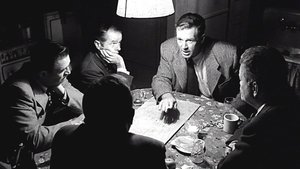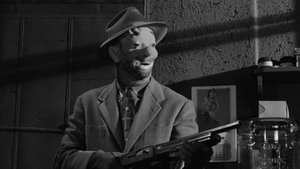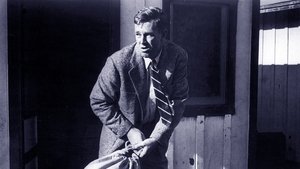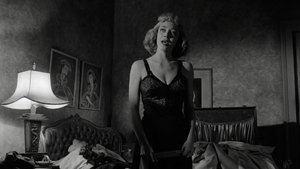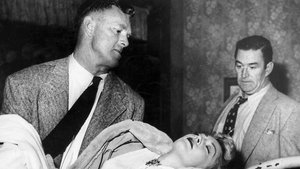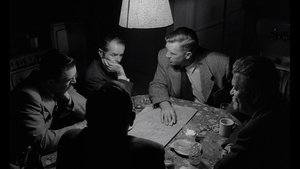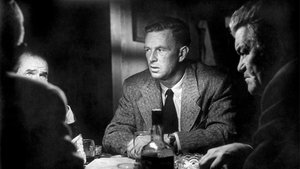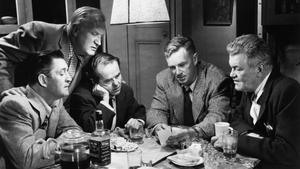Contact: [email protected]
Video Sources 0 Views
- Watch trailer
- The Killing


Synopsis
Table of Contents
ToggleNoir Review: Unraveling the Brilliance of The Killing 1956

Introduction
In the annals of old movies, few stand as tall as “The Killing 1956.” Now, with the release of its early colored version, the film’s brilliance shines even brighter, inviting audiences to rediscover its gripping narrative and timeless themes. In this article, we embark on a journey to explore the impact of colorization on the viewing experience of “The Killing 1956” and its enduring significance in the realm of cinema.
Check The Full Colorized Movies List
Check Our Colorized Movies Trailer Channel
Understanding The Killing 1956: Director, Cast, and Genre
Directed by the visionary Stanley Kubrick, “The Killing 1956” boasts a stellar cast led by the incomparable Sterling Hayden in the role of Johnny Clay, a career criminal with one last heist on his mind. Supported by a talented ensemble including Coleen Gray and Elisha Cook Jr., Hayden delivers a masterful performance that anchors the film’s taut narrative and keeps audiences on the edge of their seats.
Kubrick’s vision for “The Killing 1956” is one of stark realism and unflinching honesty, capturing the gritty underbelly of crime with stunning precision. With its noir-inspired aesthetic and labyrinthine plot, the film transcends its genre to become a timeless meditation on greed, betrayal, and the allure of forbidden desires.
Exploring the World of The Killing 1956: Plot and Characters
Set against the backdrop of a bustling racetrack, “The Killing 1956” follows the meticulously planned heist orchestrated by Johnny Clay and his motley crew of accomplices. As the intricate plot unfolds, viewers are drawn into a web of deception and intrigue, where nothing is as it seems and betrayal lurks around every corner.
At the heart of the story is Johnny Clay, a hardened criminal with a singular focus on pulling off the perfect crime. As the mastermind behind the heist, Clay must navigate a treacherous underworld populated by corrupt cops, double-crossing dames, and ruthless gangsters, all while keeping his true intentions hidden from his fellow conspirators.
The Art of Film Colorization
Colorization is more than just a technical process; it’s an art form that can transform the look and feel of a film in profound ways. By infusing each frame with vibrant hues and tones, colorization breathes new life into classic movies, revitalizing them for modern audiences while preserving their vintage charm.
In the case of “The Killing 1956,” colorization adds an extra layer of visual richness to an already captivating story. From the moody shadows of the racetrack to the neon-lit streets of the city, the colors serve to underscore the film’s themes of darkness and deception, drawing viewers deeper into its immersive world.
Early Colored Films: A Brief History
The history of early colored films is a testament to the ingenuity and creativity of filmmakers throughout the ages. From the hand-tinted frames of silent cinema to the groundbreaking Technicolor process, color has always played a central role in the evolution of the medium.
In the early days of cinema, color was often added to films by hand, with artists painstakingly painting each frame to create the illusion of depth and dimension. However, as technology advanced, filmmakers began experimenting with new techniques, leading to the development of processes such as Technicolor and Eastmancolor, which revolutionized the way films were made and viewed.
The Killing 1956 and Its Early Colored Version
The decision to release “The Killing 1956” in a colorized format speaks to the enduring popularity of the film and its timeless appeal. While some may argue that colorization alters the director’s original vision, others see it as a way of breathing new life into classic movies, making them more accessible to modern audiences.
For many viewers, the early colored version of “The Killing 1956” offers a fresh perspective on a beloved noir thriller. By adding color to the film’s atmospheric visuals and shadowy cinematography, colorization enhances its visual impact, drawing viewers deeper into its gripping narrative and immersive world.
The Debate Over Film Colorization
The debate over film colorization is a contentious one, with passionate arguments on both sides of the issue. While purists may argue for the preservation of films in their original black and white format, others see colorization as a way of bringing classic movies to a new generation of viewers.
Critics of colorization often argue that it detracts from the artistic integrity of a film, altering the director’s original vision and compromising its aesthetic appeal. However, proponents of colorization see it as a way of updating old movies for modern audiences, making them more relevant and engaging in today’s digital age.
Examining The Killing 1956 as an Early Colored Film
Colorization adds a new dimension to “The Killing 1956,” enhancing its visual impact while preserving its vintage charm. From the richly saturated colors of the racetrack to the muted tones of the city streets, the colors serve to underscore the film’s themes of crime, corruption, and moral ambiguity.
In addition to its aesthetic impact, colorization also adds depth to the film’s narrative, with certain colors carrying thematic significance. For example, the use of bold primary colors may evoke feelings of tension and danger, while subtle shades of gray may convey a sense of moral ambiguity and uncertainty. By manipulating color in this way, filmmakers can enhance the emotional resonance of a scene and draw viewers deeper into the story.
Influence and Legacy: The Killing 1956’s Impact on Cinema
“The Killing 1956” has left an indelible mark on the genre of crime thrillers, inspiring countless filmmakers and audiences alike with its stylish visuals, gripping narrative, and unforgettable characters. Its influence can be seen in the works of directors such as Quentin Tarantino and Martin Scorsese, who have drawn inspiration from its atmospheric cinematography and labyrinthine plot.
One of the most enduring legacies of “The Killing 1956” is its exploration of the dark underbelly of human nature and the moral compromises we make in pursuit of our desires. Through its nuanced portrayal of crime and corruption, the film offers a chilling glimpse into the heart of darkness that lurks within us all.
Director’s Cinematic Legacy: Beyond The Killing 1956
Stanley Kubrick’s contributions to cinema extend far beyond “The Killing 1956,” with a body of work that spans multiple genres and styles. From the psychological horror of “The Shining” to the epic science fiction of “2001: A Space Odyssey,” Kubrick’s films have captivated audiences with their bold visuals, thought-provoking themes, and uncompromising vision.
Kubrick’s influence on local and international filmmaking is immeasurable, with directors from around the world citing him as a major inspiration. His innovative use of camera techniques, lighting, and editing has set the standard for generations of filmmakers to come, ensuring that his legacy will endure for years to come.
Themes Explored in The Killing 1956
At its core, “The Killing 1956” is a meditation on the nature of crime, corruption, and the human condition. Through its nuanced portrayal of characters and events, the film explores themes of greed, betrayal, and the consequences of our actions.
One of the central themes of the film is the cyclical nature of violence, as characters become trapped in a never-ending cycle of crime and retribution. As the plot unfolds, viewers are forced to confront uncomfortable truths about the nature of power and the lengths to which people will go to achieve their goals.
Reception and Controversy Surrounding The Killing 1956
Upon its release, “The Killing 1956” received widespread critical acclaim for its stylish visuals, gripping narrative, and unforgettable performances. Critics praised Kubrick’s direction, singling out his innovative use of camera techniques and lighting to create a sense of tension and unease.
However, the decision to release the film in a colorized format sparked controversy among purists, who argued that it detracted from the director’s original vision. Despite these objections, many viewers embraced the early colored version of the film, praising its vibrant visuals and enhanced viewing experience.
Where to Watch The Killing 1956 Online
For those eager to experience the timeless brilliance of “The Killing 1956,” the film is available for streaming on various platforms, ensuring that its legacy will continue to captivate audiences for years to come. Whether viewed in its original black and white format or the early colored version, “The Killing 1956” promises an unforgettable cinematic journey.
FAQs About The Killing 1956
Frequently Asked Questions (FAQs) about “The Killing 1956” provide valuable insights into various aspects of the film, from its production history to its cultural impact:
1. What is the plot of The Killing 1956?
“The Killing 1956” follows the meticulously planned heist orchestrated by Johnny Clay and his motley crew of accomplices. As the intricate plot unfolds, viewers are drawn into a web of deception and intrigue, where nothing is as it seems and betrayal lurks around every corner.
2. Who are the main actors in The Killing 1956?
The main actors in “The Killing 1956” include Sterling Hayden as Johnny Clay, Coleen Gray as Fay, Elisha Cook Jr. as George Peatty, and Marie Windsor as Sherry Peatty. Together, they deliver captivating performances that bring the film’s characters to life and elevate the viewing experience to new heights.
3. What is the significance of colorization in The Killing 1956?
Colorization adds an extra layer of visual richness to “The Killing 1956,” enhancing its aesthetic appeal while preserving its vintage charm. By infusing each frame with vibrant hues and tones, colorization breathes new life into the classic noir thriller, revitalizing it for contemporary audiences.
4. How does The Killing 1956 compare to other films of its genre?
“The Killing 1956” stands out among other films of its genre due to its stylish visuals, gripping narrative, and unforgettable characters. Director Stanley Kubrick’s innovative use of camera techniques and lighting creates a sense of tension and unease that sets the film apart from its contemporaries.
5. Where can I watch The Killing 1956 online?
“The Killing 1956” is available for streaming on various platforms, allowing audiences to experience the timeless brilliance of this classic noir thriller from the comfort of their own homes. Whether viewed in its original black and white format or the vibrant hues of colorization, “The Killing 1956” promises an unforgettable cinematic journey.
Conclusion
In conclusion, “The Killing 1956” stands as a timeless classic that continues to captivate audiences with its stylish visuals, gripping narrative, and unforgettable performances. Whether viewed in its original black and white format or the early colored version, the film offers an immersive cinematic experience that transcends time and genre. As we reflect on its enduring legacy and cultural significance, we are reminded of the transformative power of storytelling and the enduring appeal of classic cinema. “The Killing 1956” is a true masterpiece of old movies, deserving of its place among the pantheon of great American films.
